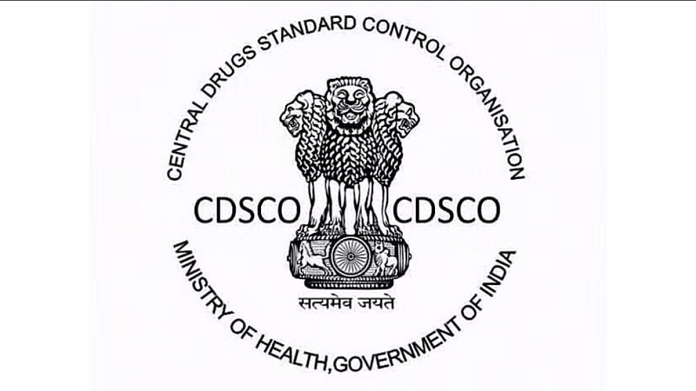New Delhi: India’s apex drug regulator has come up with new guidelines for sampling of drugs, cosmetics and medical devices amid persistent concerns around the quality of medicines manufactured in the country.
Since 2022, drugs made in India and exported to other countries have been under the scanner due to instances of serious adulteration coming to light, following reports of adverse events including deaths in Gambia and Uzbekistan, among others.
The upgraded and streamlined guidelines on sampling were notified last week.
The Central Drugs Standard Control Organisation (CDSCO) said in a circular dated 9 February 2024 that the new norms were necessitated as “from past trends it is observed that there is no defined methodology for sample selection and location of sampling etc. and was done randomly with the individual knowledge of drug inspectors”.
The drug regulator also conceded that presently, sampled drugs are mostly from big brands and collected from urban locations or sub-urban locations only, while not enough attention is paid to drugs reaching rural and remote parts of the country.
“The interior locations or rural distributions are not covered and thereby the quality of drugs at distant users/last users was not being assessed,” it said, adding that in many regions, no quality surveillance of cosmetic products was being done.
The CDSCO also underlined that there was no centralised database of sale outlets where ‘not of standard quality’ (NSQ) or spurious drugs could be reported. This database will now be maintained and such identified outlets are to be kept for regular vigilance, the government agency has said. Also, a monthly list of NSQ and spurious drugs will be published mandatorily, according to the new norms.
At present, the list of NSQ and spurious drugs shared by the CDSCO is not updated every month, nor does it share information on outlets or distributors from where samples are drawn.
ThePrint reached Rajeev Singh Raghuvanshi, Drugs Controller General of India (DCGI) who heads the CDSCO, for comment via call but had not received a response by the time of publication. Another senior official in the CDSCO, however, told ThePrint that the updated norms are part of a larger exercise to improve the quality of drugs made and supplied by Indian drugmakers.
“On one hand, we are cracking down on drug manufacturing units to check that they are following good manufacturing practices prescribed under the drugs rules, but it is also important to refine the methodology for sampling the products reaching the supply chain and ultimately the consumers,” the official said.
Chinu Srinivasan, co-convener of All India Drug Action Network, a patient rights group, said the new guidelines are important but the main challenge lies in implementation.
“The key is integrity along the chain and incorruptibility of drug inspectors as well as of quality labs. Catching the big fish may also be crucial,” he told ThePrint.
As of now, drug quality surveillance in India is guided by Sections 22 and 23 of the Drugs and Cosmetics Act, 1940.
Also Read: No dent in Indian pharma exports despite quality concerns over cough syrups, data shows
‘Maintaining approved specifications important’
The CDSCO has said in its circular that the main objective behind sampling is to check the quality and efficacy of the drugs and cosmetics available in the market with their approved specifications.
This, it added, involves monitoring the quality of active pharmaceutical ingredients (APIs), excipients (inert pharmaceutical ingredients) and finished products — of drugs, cosmetic and medical devices in all parts of the distribution chain throughout authorised shelf-life.
The agency explained that sampling involves ensuring existing control methods are satisfactory, identifying unapproved products and sales outlets operating without licence, and identifying outlets where repetitive NSQ or spurious drugs are reported.
“This guideline is mainly focused to utilise available information and identified risks for selection of sample and location to cover vast variety of drugs, cosmetic and medical devices moving in the market from manufacturing facility, wholesale outlet, retail outlet, government distribution channel etc. in urban, sub-urban, and rural locations,” the circular stated.
According to the revised guidelines, each drug inspector has been asked to collect at least 10 samples a month, including nine samples of drugs — API, excipient and formulation — and one sample of cosmetic or medical device which needs to be immediately tested for quality in designated labs.
But a major challenge, admitted the CDSCO official quoted earlier, could be the shortage of drug inspectors as the central as well as state food and drug administration departments are acutely short-staffed.
“The central agency has 505 sanctioned posts of drug inspectors, of which more than 300 are vacant and the situation is similar in the states,” the official said, adding that out of about 1,400 posts of drug inspectors in states, nearly 600 are vacant.
The last drug survey carried out by the Union health ministry in 2017 was based on 47,954 drug samples drawn from 654 districts of 36 states and UTs. It had shown that 3.6 percent of the drugs tested were NSQ while less than 1 percent were spurious, according to the ministry.
However, said the CDSCO official cited above, the recent crackdown on small and medium drugmakers has shown that the proportion of “poor quality” drugs could be as high as 15 percent.
This has prompted the government to tighten quality norms across drug manufacturing units in the country.
(Edited by Nida Fatima Siddiqui)
Also Read: Kerala doctors & researchers plan India’s 1st private drug quality assessment drive



